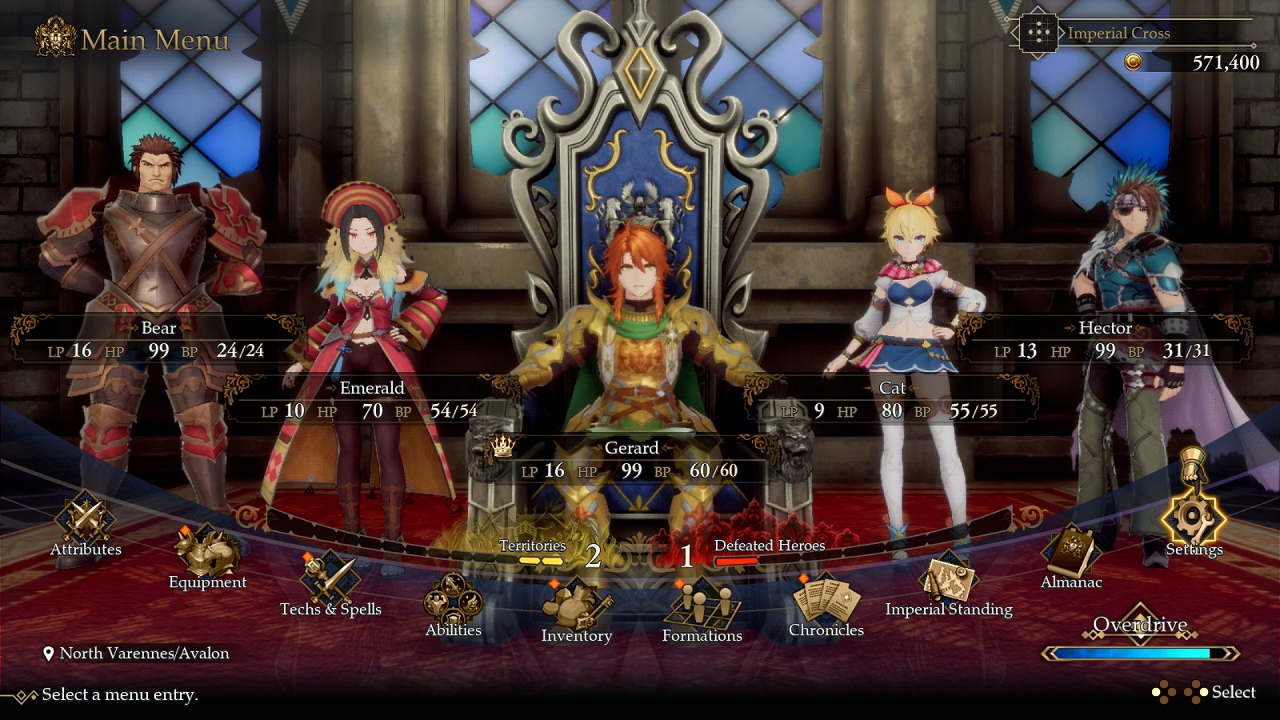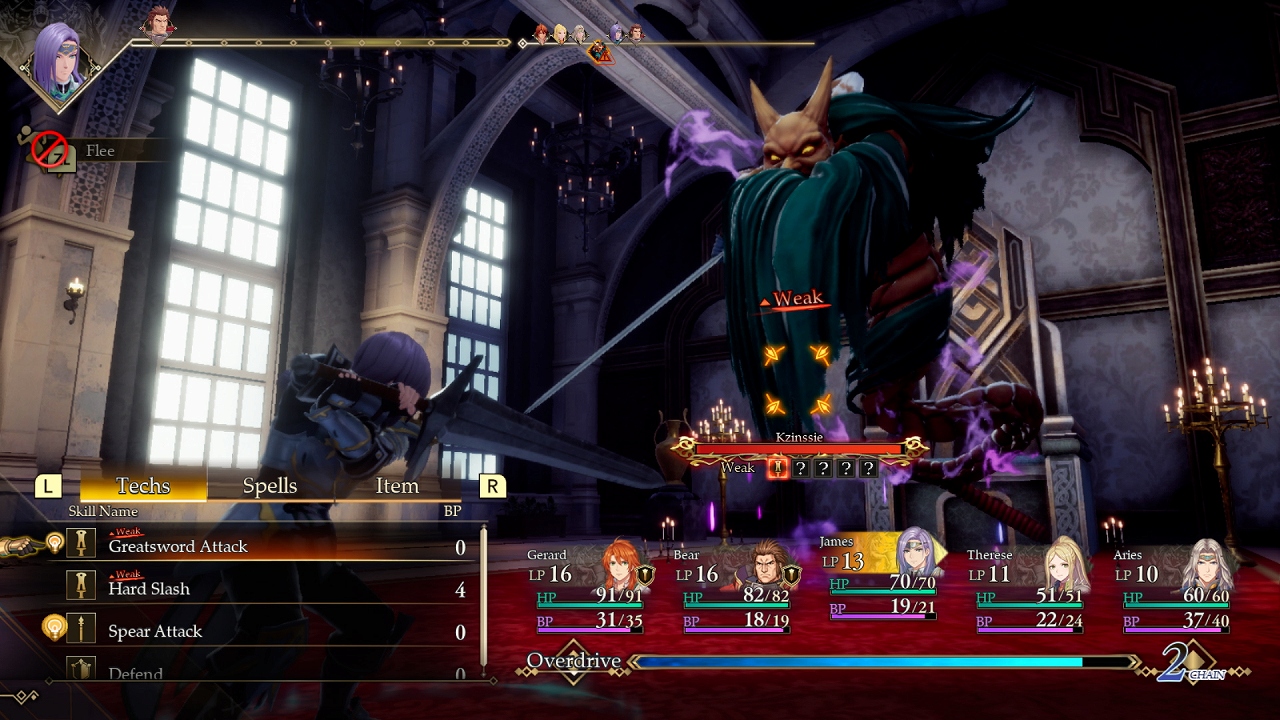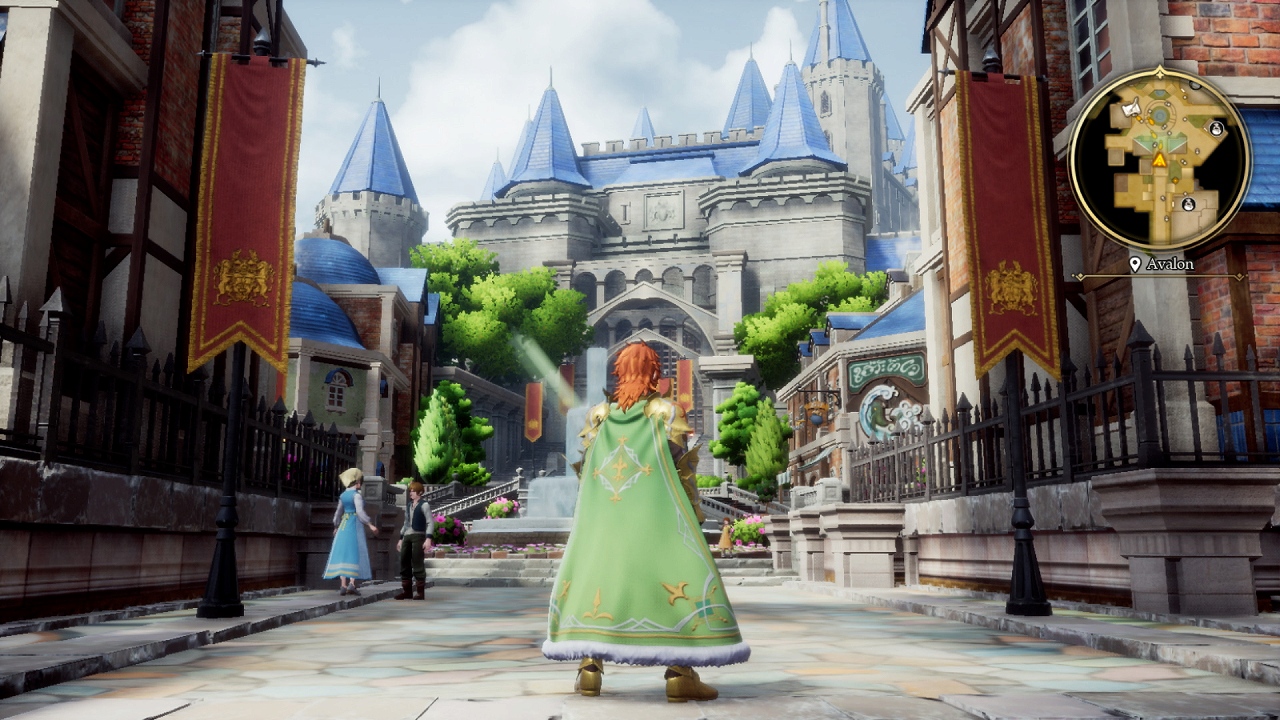I had to opportunity to sit down with Shinichi Tatsuke to talk about the upcoming Romancing SaGa 2: Revenge of the Seven. Time for a deep dive!
GamingBoulevard: There are a lot of classic games getting remakes, which is really cool to see. What were the key considerations when working on the remake of Romancing Saga 2? How did the team decide which aspects to preserve and which needed updates for modern audiences?
Shinichi Tatsuke: Romancing Saga 2 was originally released in 1993, and while it was groundbreaking back then, we knew we had to make careful decisions about what to update. The game had some truly unique mechanics, like the Imperial succession system where the protagonist changes over time. The entire story takes place over thousands of years, which is rare even today. We felt it was essential to preserve these aspects because they’re what made the game stand out, and we wanted modern gamers to experience that same sense of scope and depth.
The Saga series also has its signature features, such as the glimmer system where characters learn new skills during battle, and the formation system that affects battle strategies. These elements define the Saga experience, so they had to remain intact. However, there were areas in the original game that felt outdated. For example, some mechanics weren’t intuitive, and the difficulty curve could be tough to handle for new players. We focused on improving these areas by adding quality-of-life features, making the game more accessible without compromising the core identity that fans of the original loved.
GamingBoulevard: That brings me to my next question. Was there pressure within the development team to make the game more accessible for modern players, especially given the more challenging aspects of the game like the generational system and its open-ended nature? How did you balance difficulty with maintaining the freedom that defines the Saga series?
Shinichi Tatsuke: There was definitely a lot of discussion about this during development. The original Romancing Saga 2 was quite challenging in certain aspects, like figuring out enemy weaknesses on your own and managing the generational aspect without much guidance. In today’s landscape, where games tend to offer more assistance, we felt it was important to make adjustments to help modern players without alienating those who appreciated the difficulty of the original.
One of the more concrete changes we made was displaying enemy weaknesses more clearly, which wasn’t available in the original. We also streamlined certain systems that had been a bit too obtuse, making them easier to grasp without watering them down. The development team had a number of fans of the original game, and they were instrumental in maintaining the game’s core identity. They helped ensure we didn’t stray too far in making things easier. The challenge for us was to find that balance between making the game approachable for new players while still giving veteran fans the deep, strategic gameplay they expect from a Saga title.
GamingBoulevard: The generational aspect of Romancing Saga 2 is still quite unique, even among modern RPGs, which tend to focus on one hero’s journey. Why do you think the generational mechanic was so important, and what kind of message does it send to players?
Shinichi Tatsuke: The generational mechanic is really central to the theme of Romancing Saga 2. It’s about legacy, about the passage of time, and the idea that no single hero can accomplish everything. Instead, it’s a long, continuous struggle passed down through generations. This concept resonates because, in real life, we also inherit things from the past, whether it’s knowledge, traditions, or even challenges that we face as a society.
In many ways, the game mirrors the cyclical nature of leadership, like monarchies or ruling families, where the burden of leadership and the responsibility to achieve victory doesn’t fall on just one person. It’s a shared goal that spans centuries. By letting players experience this grand scale of time and lineage, we’re offering them something unique compared to other RPGs where you focus on one hero’s life. There’s a certain depth in realizing that you’re part of something much larger than yourself, and that’s a message I think players can connect with.
GamingBoulevard: Speaking of evolution, you didn’t go with the popular HD2D style for the remake, but instead opted for a more challenging 3D adaptation. Could you talk about the challenges you faced in bringing the classic pixel art to life in 3D?
Shinichi Tatsuke: Moving from the original 2D pixel art to 3D was definitely one of the bigger challenges we faced. In 2D games, a lot of the narrative and world-building happens in the player’s imagination. The simple, pixelated characters and environments leave space for the player to fill in the gaps, mentally fleshing out the world in their own way. In transitioning to 3D, we had to make sure we weren’t losing that charm, but also make it more visually dynamic to fit modern expectations.
For example, in the original, characters might stand still and “talk” in a very straightforward manner, with text appearing on the screen. In 3D, that can look very flat or even awkward if not handled well, so we had to ensure the animations, environments, and dialogue felt natural. We had to make decisions about how characters move, how they express emotions, and how cutscenes play out. These aspects add depth to the experience without feeling too different from the original. It was a tricky process, but by filling in those visual and narrative gaps that existed in 2D, we were able to make the game feel fresh while still staying true to its roots.
GamingBoulevard: What are your personal favorite elements of Romancing Saga 2, and what makes it stand out as a project for you?
Shinichi Tatsuke: One of my personal favorite elements is the Imperial succession system. It’s such a unique way of telling a story and progressing through the game. You start with the first Emperor, Leon, and after his death, his son Gerard inherits his knowledge and skills. This cycle continues as each generation passes down what they’ve learned, and each new Emperor carries the weight of the previous generations’ successes and failures.
It’s something that you don’t see often in games, even in today’s RPGs. There’s a real sense of history unfolding over time, as you’re not just following one character, but a whole lineage. You see the consequences of decisions made by previous Emperors affecting the future. It’s not just about one hero saving the world, but a series of people over time contributing to an ultimate goal. I think that makes Romancing Saga 2 truly unique, and it was incredibly rewarding to work on a project that explores this idea in such depth.
GamingBoulevard: If you could share one message with both new and long-time fans of Romancing Saga 2, what would it be?
Shinichi Tatsuke: To the long-time fans, I want to say thank you for your dedication to the Saga series. We’ve worked hard to stay true to the original while making some necessary updates, and I hope this remake brings back that same excitement and sense of adventure that you felt when you first played Romancing Saga 2. This game is a true homage to its roots, but with modern enhancements that I think you’ll appreciate.
For new players who might be unfamiliar with the series, this is a fantastic entry point. We’ve made the game more approachable with features like casual mode, and we’re also releasing a demo so you can try it out before fully diving in. Don’t be intimidated by the game’s history or complexity—this remake is designed to welcome new players while keeping the depth that fans love. I hope you’ll give it a try and experience what makes Romancing Saga 2 so special.
GamingBoulevard: Thank you so much for your time, and I’m really looking forward to the full release of the game!
Shinichi Tatsuke: Thank you for having me!




